DISCOVER
THE ISLAND
OF ARTEMIS!
Agia Marina
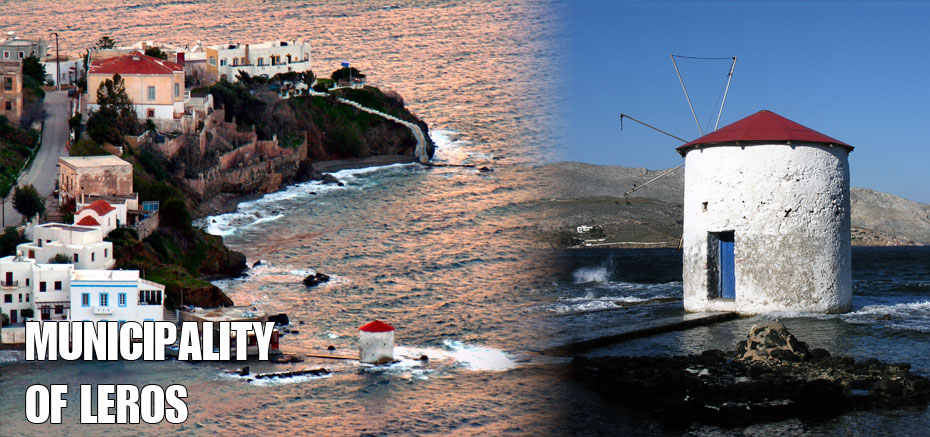
Agia Marina is one of the island’s two ports. It’s a small coastal village that has grown over time to be united with Platanos, the island’s oldest inhabited area and capital. Presently, this unified town is the island’s administrative and commercial centre. From a distance it would appear that this small town has spread out over the slopes of two mountains, with homes stretching from the coast to the foothills of Kastro. However, as you approach, the true beauty of this jewel in the Aegean is unravelled before your very eyes. The acquaintance to Agia Marina starts at the port, with the fortress of Bouzi or Bourtzi at its entrance and the towering lighthouse on its edge, to the side pier and the quaint dry dock and the well-preserved historical windmill.
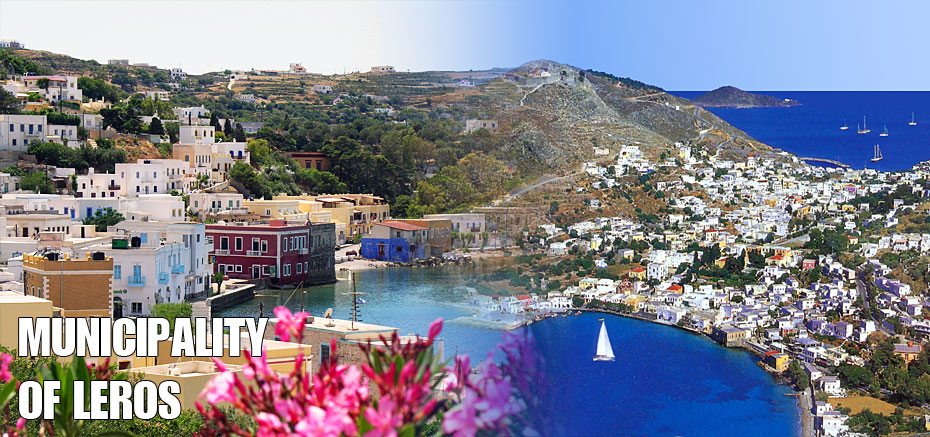
Many traditional one and two-storey homes have been preserved in the capital including many mansions. The town is densely built thus, creating wonderful, narrow alleyways that invite you to wander through and enjoy the area. The nostalgic atmosphere of the old town of Avlaki will take you back in time where you can awe at the majesty of the splendid architecture combined with the serenity of nature itself with the springs of fresh, clean water flowing from the source at Paliaskoupis.
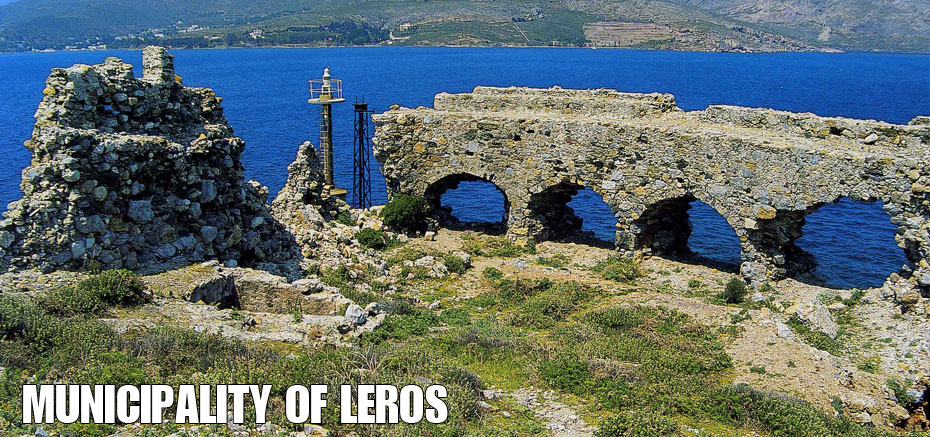
The presence of the old windmill generates respect and stands as a reminder of the importance it has played in the daily routine of people’s lives over time. Town Hall is housed within two neo-classical buildings that dominate the area. The churches of Christ and the Holy Cross are both old and distinguished. The Church of Agia Paraskevi holds historical significance as it used to be the island’s metropolis cathedral. It stands on the edge of this quarter and the stepped pathway leading to the peak of Kastro hill.
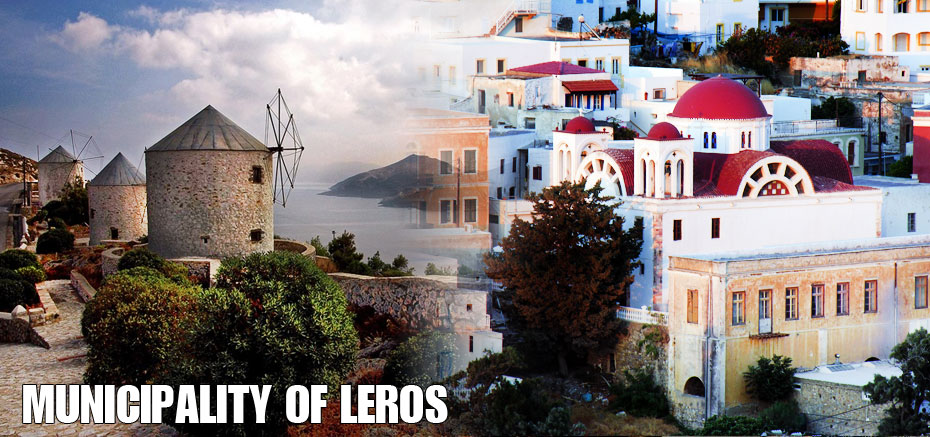
The old village has been developed surrounding Agia Paraskevi and beneath the Kastro (Fortress), which during the Ottoman period included the Turkish quarter with Konaki and the baths.
The settlement of Agia Marina is the capital of Leros’ Municipality. Public services are housed in the Italian styled buildings and neo-classic mansions, adding a special ambiance to Agia Marina. When weather conditions are not favourable to use the main port of Lakki, ships moor at Agia Marina. There are many tourist shops, restaurants, cafés and bars. Also, it is ideal for enjoyable and unforgettable night life and entertainment. Two Kindergartens, a Primary School, a Junior high school, the Financial and Revenue Services (DOY), the Cultural Municipal Enterprise a Bank and the Archaeological Museum operate in Agia Marina and are housed in a well-preserved neo-classical building. The Post Office, Telecommunications, the Police Station, a local radio station and a hall for cultural events are all located in the lower level of the Italian styled Customs Office.
ALINDA
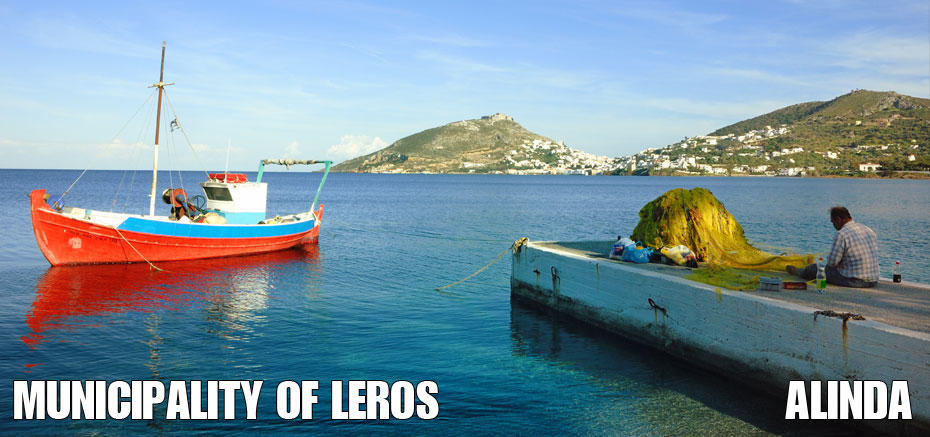
Alinta is located in the centre of the Bay of Agia Marina Bay (called Alinta Bay) and constitutes the most developed tourist area in Leros with extremely modern tourist accommodations. The area is densely planted with pine and olive trees and a heavenly sandy beach compliments the beauty of the crystal-clear sea.
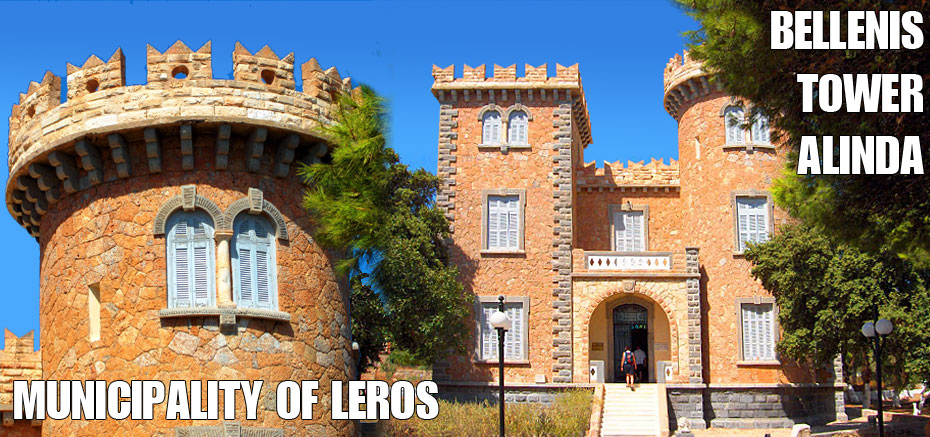
The Beleni Tower is an elegant, old mansion restored with special care. It hosts the Folkloric and History Museum with a library, the Press Museum and an Art Gallery in the courtyard where many cultural events take place.
From a historic point of view, the Municipal Guest House is a very important building as it is considered to be Leros’ first hotel. This is where the sanctuary of the Palaeo-Christian Church of the Virgin Mary of Galatiani bearing rare mosaic art technique was found. In the surrounding area, there are a lot of churches, while the biggest of them is the Basilica of Agioi Saranta. Quite near Alinta is Krifos, a small idyllic sandy beach that is hidden between the rocks and is accessible only by boat. Fresh, ice cold water pours out from a natural spring at the bottom of the sea. Just above Krifos, Klidi (a key) emerges as the highest point of Leros.
The majestic blue waters of Alinta Bay are most inviting and appropriate for a variety of sea activities and extreme water sports which are available for you to enjoy.
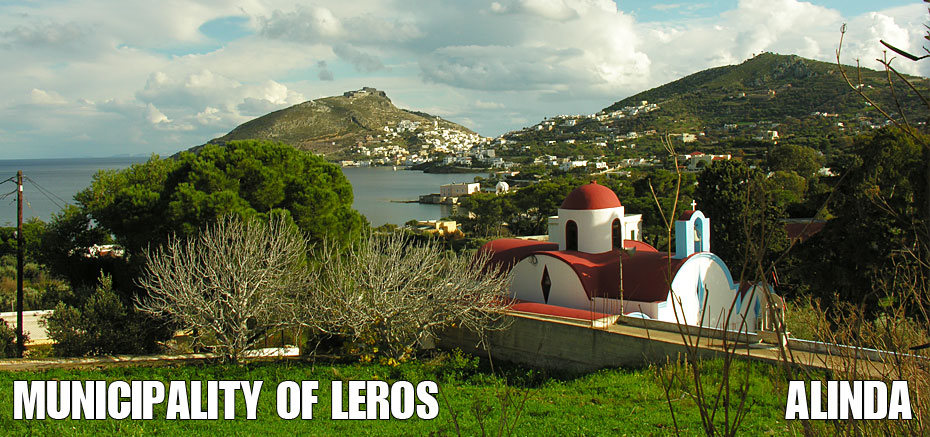
At the beginning of the previous century, Alinta was ideally selected by Lerians originating from Egypt for Leros’ exceptional natural beauty and its healthy climate, environment and living conditions. They built beautiful, exotic, country homes and villas with neo-classic, architectural details which are up-kept, maintained and preserved to this very day. In recent years, the settlement is preferred not only by the local inhabitants of the island but by foreigners alike as a prime location for all the above mentioned reasons, but also for the development of summer homes and holiday accommodations in general. Further, this area hosts one of the best swimming beaches on the island.
Alinta is typical in appearance of Greece’s beautiful coastal settlements developed with our foreign visitors in mind. All services such as restaurants, entertainment and recreational activities and commercial businesses can be found along the entire coastal boulevard.
The greater part of Alinta Bay constitutes this wonderful coastal community.
Vromolithos - Tourkopigado
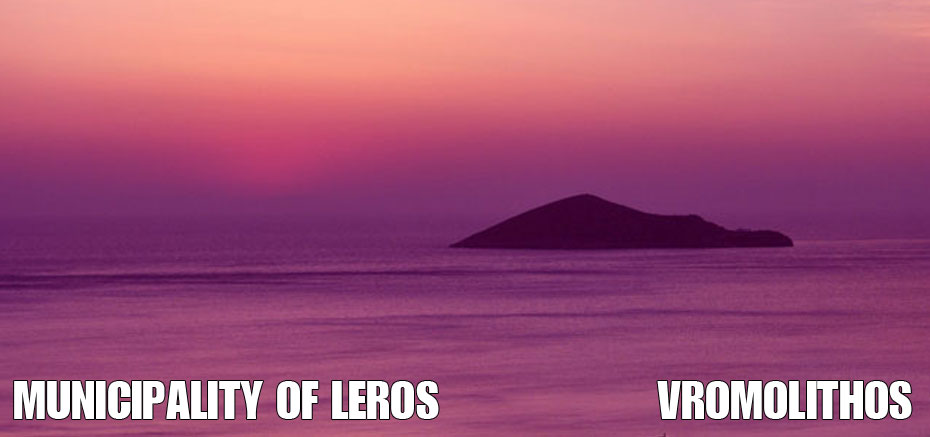
Next to Panteli, there is an open bay called Vromolithos, with a great sandy, pebbly beach. In this area, there are small, hospitable hotels and rooms to rent, fish-taverns with fine appetizers next to the sea. Pease and quiet are guaranteed during your stay at Vromolithos. Across from the Beach of Vromolithos, lies the quiet islet called Agia Kiriaki which is a small church built on its peak.
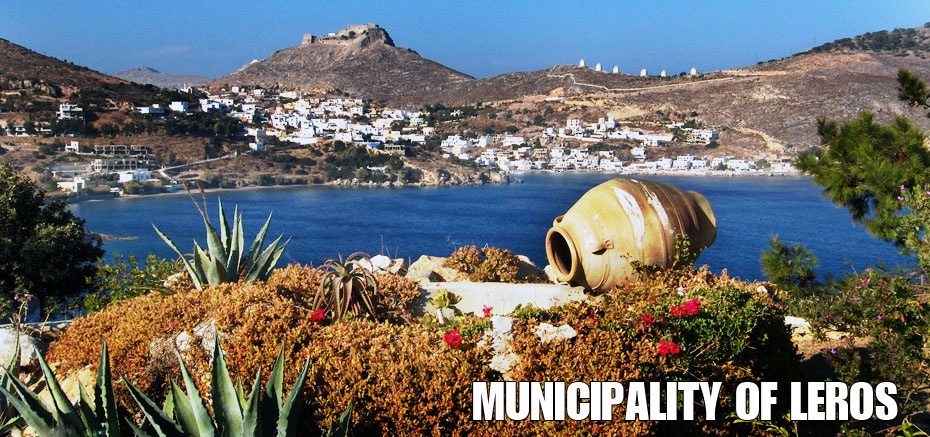
Tourkopigado looks like a window with nice view opening up to the dreamy, unusual beauty of the island. Romantic, pebbled promenades, crystal- clear beaches for swimming and fishing, sandy beaches scattered amongst the rocks are only a few of the attractions that will take your breath away while visiting Tourkopigado. All these natural wonders combined with the Second World War remains near the top of the hill Vigla contribute the area called Vourlidia.
GOURNA - DRYMONAS
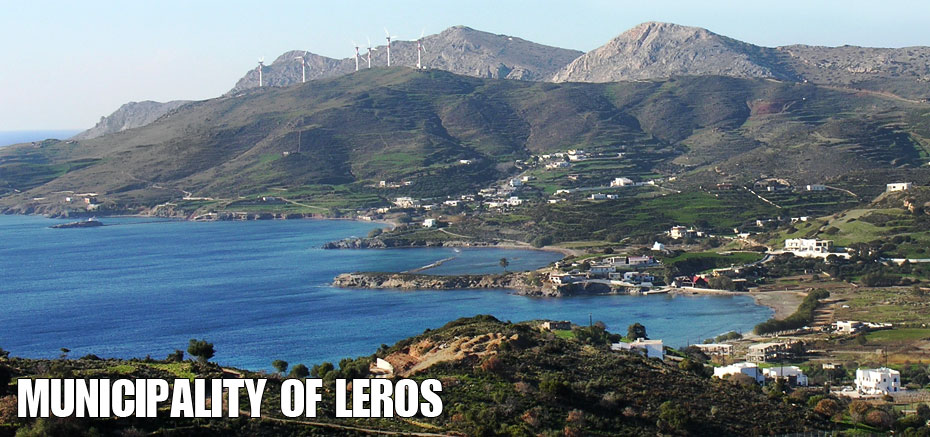
On the west side of the island, the open Bay of Gourna appears. The beauty of the landscape is supplemented by attractive country homes, gardens, orchards and plantations of citrus trees. It is one of the villages that is quite popular with all visitors to Leros, particularly because of the large, sandy beach.
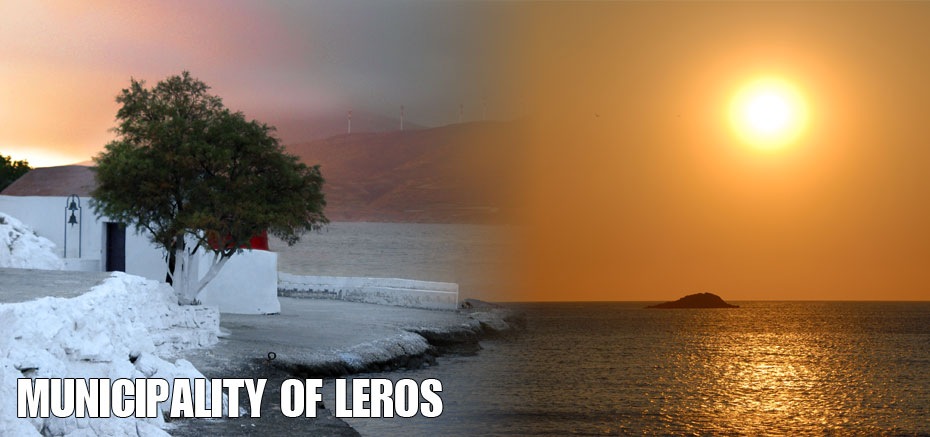
After passing Gourna southbound, you we will find the settlement of Drymonas. In this area, there is the small church of the Virgin Mary Gourlomata with remarkable, religious frescos inside. The church was built in the 14th century from building materials derived from a ruined building of ancient times. The settlement is sparsely developed and it has and excellent view. It has small units and rooms to rent.
KAMARA - KOKKALI
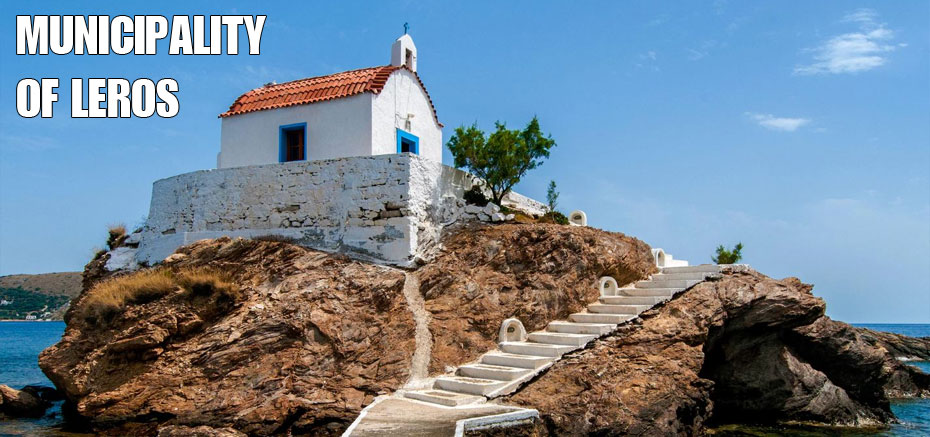
Quite near Alinta, the little, Mediterranean - styled village of Kamara is located. Kamara began with linear progress along the axis of the main road with scattered homes and small industries and places of work. Even though Kamara today appears to be a as we see it appears to be a sparsely developed community, all fundamental facilities and services are readily available to all inhabitants. In the last three decades, there has been a remarkable increase in the population of this community that is only 3.5 kilometres away from Leros’ capital of Agia Marina.
Along the axis of the main road, a wide range of small business and professional establishments operate In particular, there is a bakery, a marble cutters’ workshop, building material manufacturers, an area rug workshop and a cattle feed packing company. Within the last year, many shops have been established in this area.
In the area of Kokkali, there is the small, picturesque church of Agios Isidoros that is built on an islet in the sea which is connected to the main land by a narrow road. This church is next to the old sunken harbour.
KRITHONI
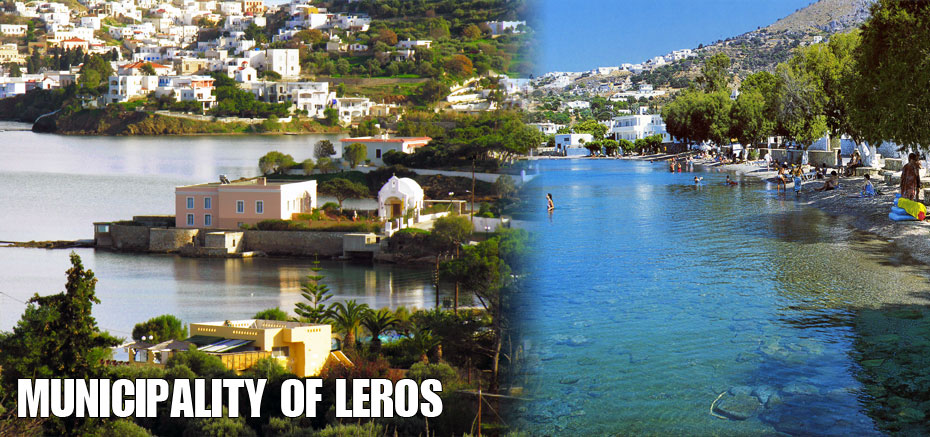
Krithoni, which is between Alinta and Agia Marina, spreads from the sea up to the high hills. It is a very green area with beautiful homes, plenty of small churches and charismatic, older-styled residences of Leros. Also, there are luxurious hotels and hospitable accommodations for rent, music halls, restaurants and swimming pools.
The neo-classic mansion called ‘Patriarchio’ which in the Greek language stands for the Patriarchate is located in Krithoni. The small church of Agios Sofronios has been built in the courtyard at Patriarchio. Occasionally, the Patriarch of Alexandria, Sofronios, used to stay here.
LAKKI
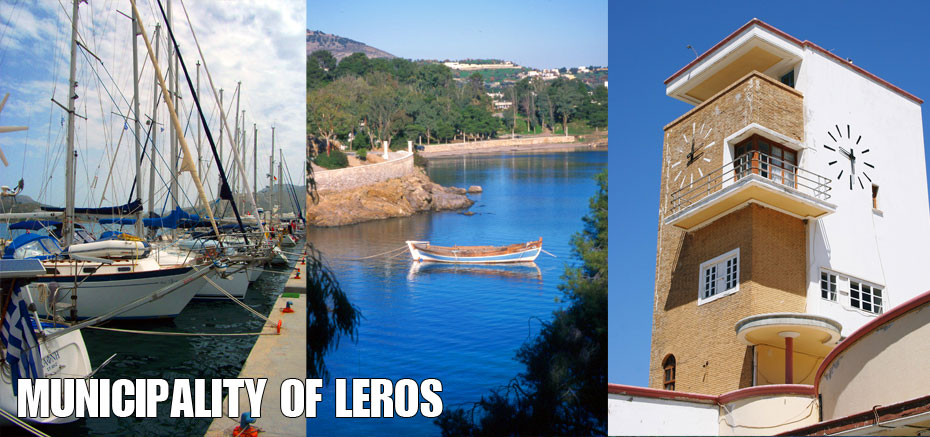
Four km southwest of Platanos is Lakki, the main port of Leros. It is secure and safe and is the largest natural harbour in the Mediterranean. It has modern port facilities and two units for servicing yachts. It looks like a huge lake, with an open space of only 400 meters towards the sea. This natural characteristic was the reason why it was called Porto Lago (port - lake) by the Italians and was chosen as a naval base.
Lakki has a very different colour from the rest of the island yet it is both unusual and extremely impressive Imposing buildings stranded across the beach, are built in a modern and simple, so-called International architectural style. Monumental buildings, wide streets, rows of tree and parks, all designed and developed by the Italians during the inter-war period of 1934.
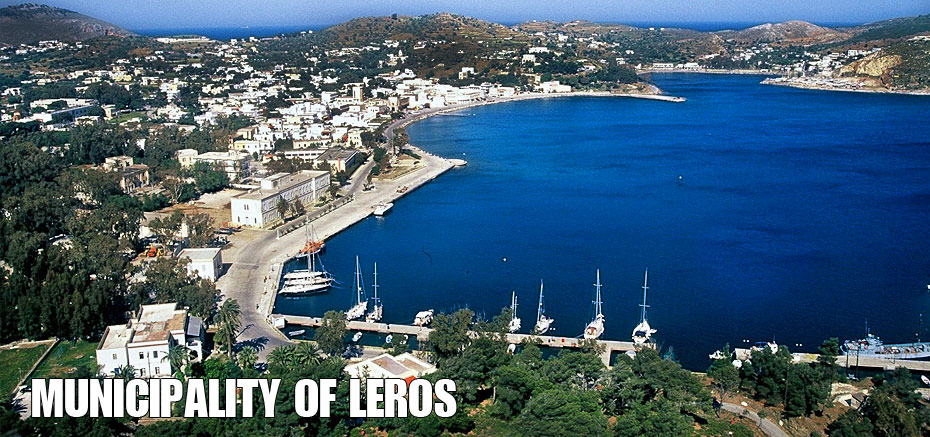
According to the specialists, the designers followed a mixture of classic, neo-futuristic and rationalistic architecture, which reflected the colonial philosophy of a “dominant nation” during the inter-war period in Italy. The town was probably designed by the architect Rodolfo Petracco, and both he and another architect, Armando Bernabiti, appear to have designed the most important buildings. Lakki is one of the three unique residential estates built according to the International Style. The others are Saubadia in Italy and Weissenhof near Stuttgart.
In the centre of the town is the market with the characteristic Clock Tower and circular wall surrounded by columns. The public buildings which stand out even today are the Customs’ Building which today is home to the Police Station., the Hospital, the Elementary School (1934-36), the building of the Naval Administration (1929), the building which housed the 10th Infantry Regiment and was called the “Caserna di Regina” or the Royal Barracks, the Hotel Roma in the market that was later re-named Hotel Leros, as well as the Catholic church of St Nicolas, which today operates as an Orthodox church. The Lerians have preserved these historical buildings as best they can, and continue to attract all the island’s visitors. But, signs of erosion on some of these buildings are evident.
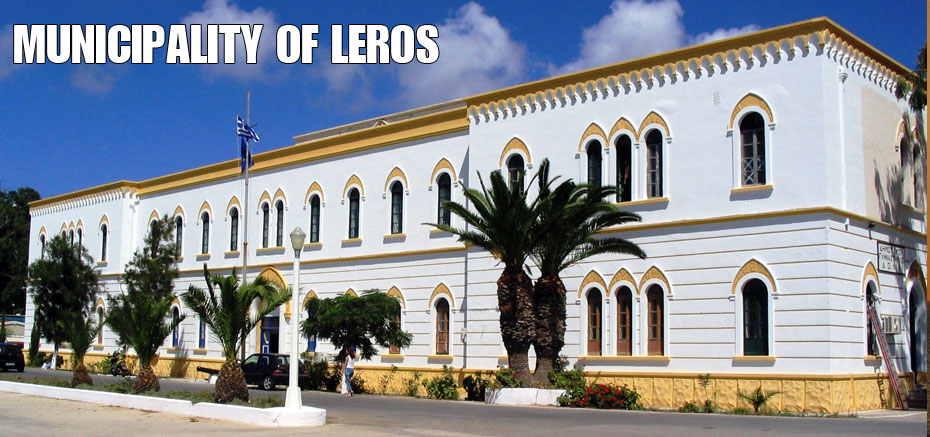
At Lakki, just as in Partheni, the Greek military dictatorship from 1967 to 1974 created prison camps for political refugees and prisoners in an abandoned section of the Italian barracks, which had been converted into and served as the Royal Technical Schools until 1960 as well as the Leros State Rehabilitative Institution.
Also, the church of Agios Thelogos at Lakki holds significant, historical interest as being one of the finest churches in the Dodecanese with wonderful collection 11th century icons. Other churches are those of Agios Spyridon, Agios Georgios and Agios Zacharias just to mention but a few of Leros’s one hundred churches are all fine examples of church architecture. The Monument honouring the War Dead or the Monument to the Unknown Soldier from the Destroyer Vasilissa Olga located near the port is of interest, as is the “Tunnel” War Museum at Merikia recently restored and exhibiting exhibition all kinds of objects from the War on Leros.
Today, Lakki hosts a reasonably modern market, hotels units, restaurants and nightclubs.
Actually, Lakki does not function or operate as a community of only 2000 inhabitants but in reality it would appear to function similar to a much larger community. Lakki is the most organized settlement in Leros with a foreign flare as it was built according to European city planning standards from the beginning of the previous century.. Its architectural style is completely different from the traditional Aegean styled developments found in other parts of Leros. Lakki makes up the second most important residential community of the island.
There is an extremely wide, coastal road which is appropriate for serving the operational requirements of events like parades and massive, citizen assemblies to commercial or administrative operations, entertainment and port authorities’ activities
That is where all the island’s main roads meet, with equally comfortable roads leading to the beaches. Some other roads lead to the other settlement throughout the island and are a vital part of the island’s main road network. Apart from those roads, there is another semi-circular shaped road that goes across the eastern, central and southern regions and intersects all the other streets forming the massive Roussos Square towards the north and the Square of Agios Nikolas to the south
Pedestrians can easily walk about on these roads without being in any kind of danger. Moreover, in Lakki there are large squares where citizens can gather to take part in educational, recreational, cultural and social events. The vast green areas of the town are in complete harmony with the buildings and architectural developments. Indicatively, at the beach, the old palm trees compliment the buildings and the essential morphology for Leros’s urban environment.
Xerokambos

The visitor can swim in the calm sea and relax at any one of the region’s peaceful and charming beaches. In the southern part of the island, 7 km from Agia Marina, you will come across a coastal village, in front of which lies the Bay of Xerokambos with the small islets known as the Glaronisia secure its entrance. Across from this bay at a distance of one nautical mile, the island of Kalymnos appears.
The houses of Xerokambos are scattered throughout a small valley where olive trees, cypress and almond trees as well as many, many flowers can be seen. In the background, the landscape rises and at the top of the hill, at an altitude of 70 meters, sits Palaiokastro, or the castle of Lepidon, which is older than the castle of Panteli.
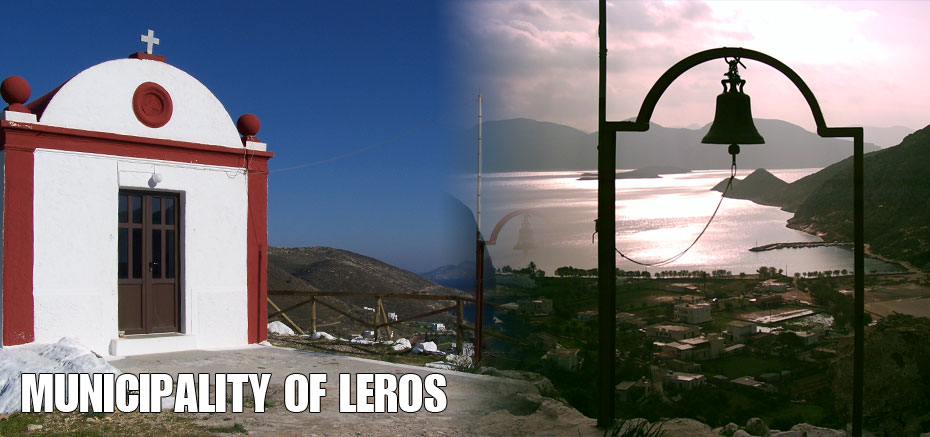
It is built within the ruins of the ancient acropolis, which dates back to 2,500 BC and flourished during the 4th century BC. Today, the old ruins of its walls and the remains of a large, early Christian basilica can be seen. Also, among the ruins is the small, picturesque church of the Virgin Mary.
Near the settlement of Xerokambos is the charming, little church of the Panagia Kavouradena, considered to be among the most beautiful churches on the island. It is built into the rocks along the coast at the exact location where according to legend a fisherman looking for crabs, found the icon of the Virgin Mary wedged in the crack of some rocks.
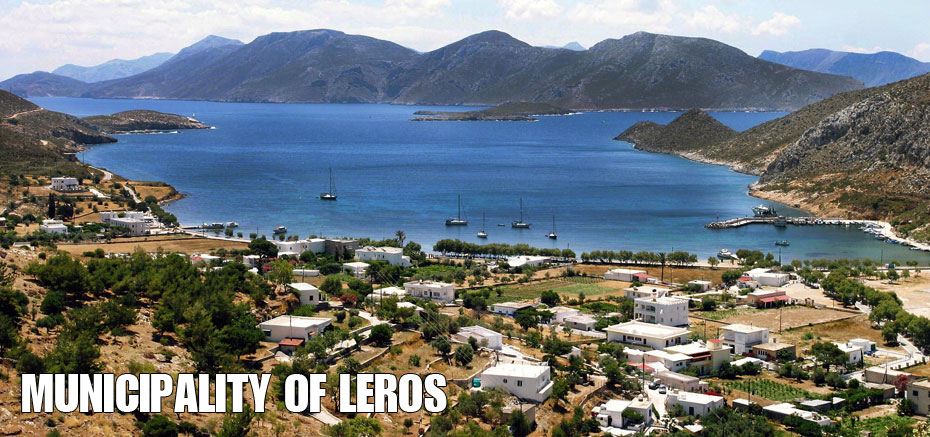
At Xerokambos, you can find tourist accommodations and restaurants, as well as nightclubs. You can enjoy a swim in the crystal clear waters at the beach of Xerokambos.
Free es, both with and without oxygen, are offered as a suggestion to the bolder, risk-takers amongst you. A er-training school operates in the area.
PANTELI
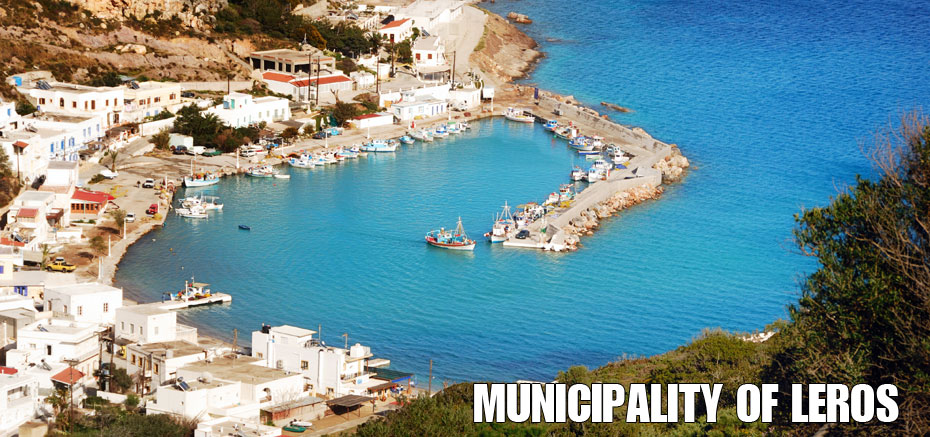
On the east side of Leros, just under Platanos lies Panteli. This small fishing-village, with its genuine island character, stretches out and unifies with Platanos. The old, traditional homes, the boats and fishing boats, compliment the perfect image and are enhanced by the infinite blue and turquoise green colours of the sea in the backround.
Today, Panteli has been transformed into a cosmopolitan yet tranquil centre with yachts and cruisers mooring by the jetty next to the fishing boats, the taverns, pubs and the local cafés, which attract both locals and travellers alike.
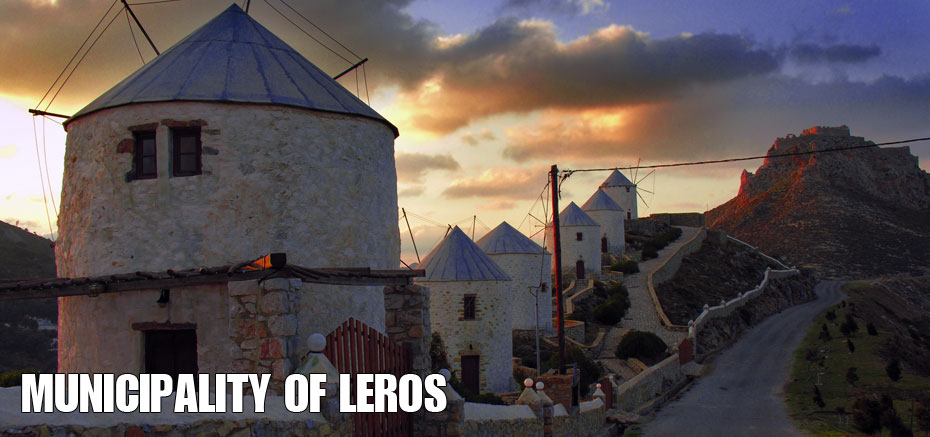
As visitors to Leros claim, “If one does not experience Panteli, he/she has not seen anything of the island.”
At both ends of the community and along the beautiful coast many homes, country mansions, summer homes as well as travellers’ accommodations have been developed. All of the buildings compliment the natural beauty of the island and contribute to its uniqueness.
Partheni - Agia Kioura - Blefoutis

Partheni lies at the northern edge of Leros, with a bay by the same name, and the small islet of Archangelos at its entrance. The small fishing village unfolds like an artist’s fresco, between the fertile valley and the sea. There is an airport at Partheni. It is a historical place, known since antiquity. It is said that this is where the sanctuary of Parthenos Iokalis (i.e. Artemis) stood and from where the modern name of Partheni has been derived. The archaeological site at Partheni contains the ruins of a pre-historic settlement dating back to 3800 BC. Recently, the ruins of a Hellenistic temple have also been discovered.
Visitors with an interest in the history of Greece must visit the archaeological site of Partheni located next to the airport. During excavations in 1980, a unit of churches built on top of the Roman temples was discovered. The precise location of the ancient temple of Parthenos Iokalis has yet to be identified. The popular historian Iakovos Rizos Ragavis wrote in 1855, “There is a large deserted church which has many plaques and stands on the foundations of an ancient temple, undoubtedly that of Artemis …”Although early Christians used to build their churches over the ancient Greek temples and re-cycled the materials found at the site, it has not been possible to locate in the vicinity of the early Christian church the precise positions and the remains of the ancient buried temple.
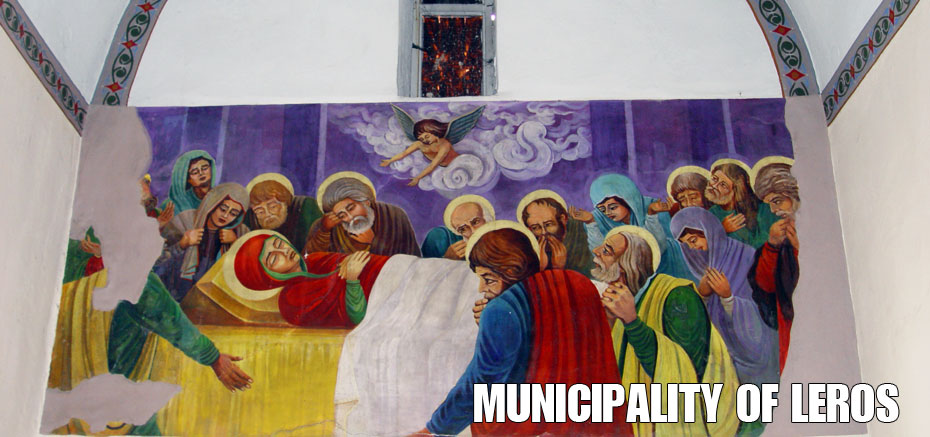
The church of Agios Georgios dated to the 10th century AD, is located in the greater vicinity also used ancient recycled materials likely excavated from the ruins of the Temple of Artemis. During the 1967-1974 military dictatorship, there was a prison camp in the region that was housed in the warehouses of the old Italian barracks, which still survives today. The first political prisoners were brought here in July, 1967 and by 1971 almost 4000 people had been “accommodated” here, farmers, laborers, employees and intellectuals...
Partheni got its name from the Sanctuary of Artemis where the ancient Goddess of Hunting was worshiped. Within the surrounding area, three very important local facilities like the airport, the shipyard and the military barracks where political prisoners were held during the 1967 – 1974 dictatorship, have been established and operate.
The church of Agia Kioura or Matronas of the 18th century is located on the coast to the north. It is worth visiting because of its beautiful icons that were created by political prisoners during the dictatorship. Today, these icons are protected and have significant historical interest and value. Ayia Kioura is protected and preserved by the Ministry of Civilization as a work of art.
The natural beauty of the gulf, the exceptional natural environment and the place’s history are fundamental factors for the area’s development. The gulf’s most attractive beaches, Belfoutis and Agia Kioura, combined with its unique residential development have established Partheni as a popular destination for visitors to the island of Leros. The easy transportation of travellers via the airport is another factor contributing the identity of this region.
Blefoutis - A small distance away from Partheni on the eastern side, a small, lush-green village with brilliant beaches and crystal-clear sea water with plenty of taverns has been developed. It is an ideal location for rest and a relaxing vacation.
PLATANOS
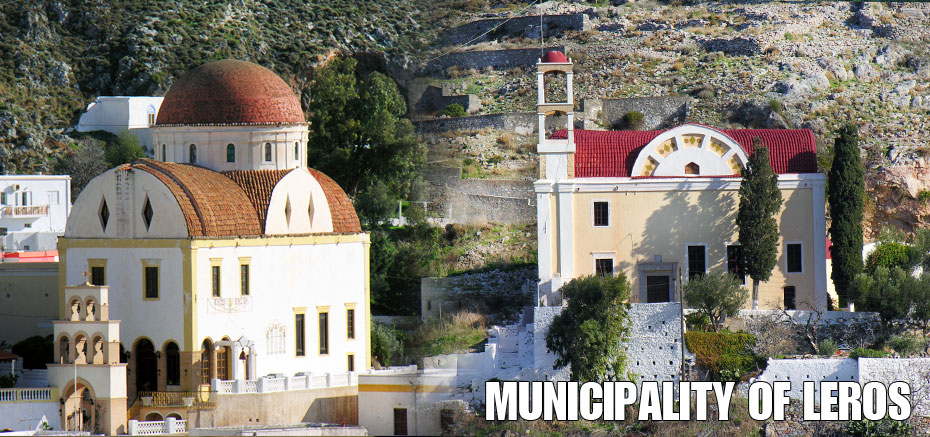
Platanos presents an image of mountainous settlement, with a small town square at its highest point with traditional, narrow paths. Nevertheless, most characteristic of Platanos are the neo-classic buildings where most social services are housed. The Town Hall is sheltered in a beautiful neo-classic building at the square, which is a preserved, historic building that was built by Lerian Nikolaos Tsigadas Pasha, in 1900 as an Administration Building, where all the Municipal services would be housed.
The building is strategically located to better serve the development of the Municipal operations.
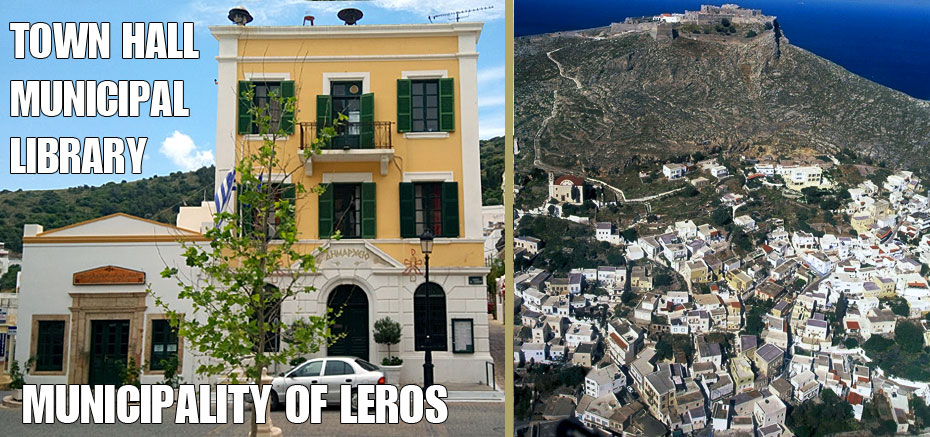
The Municipal Library, Leros’s Historic Records and Archives, the Citizens’ Service Centre (KEP) and the Municipal Financial Services or the Revenue Building are also housed in neighbouring buildings. A short distance away, on a traditional road that leads to the Castle, is the Land Titles’ Building.
On the axis of the main road towards Agia Marina, is Leros’s branch of the Telecommunications’ Organization of Greece (OTE), the Post office, and Leros’s Social Insurances Institution.
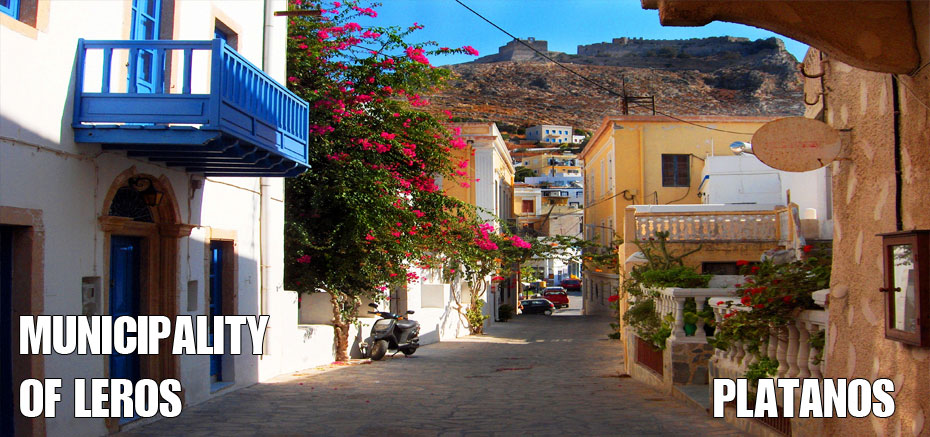
Local shops and businesses in the Platanos area, manage to meet by a great percentage, both annual and seasonal demands and requirements on merchandise and food products for the area as well for the rest of the island.
Platanos, Agia Marina and Lakki have the biggest markets on the island. In fact, they constitute a beautiful, hospitable city that has a lot to offer from the modern stores for all kind of shopping to the magical view from the marvellous Castle. The latter is built on the peak of Apitiki Hill and dominates Agia Marina as it embraces the entire area while offering a panoramic view to the the magnificent blue of the Aegean Sea.







